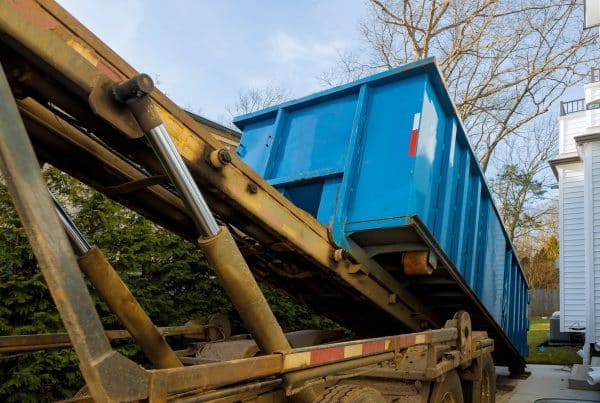Winterizing your home’s exterior is an essential task that ensures both warmth and protection for you and your investment. From cleaning and inspecting gutters, sealing gaps and cracks, checking windows and doors, and prepping exterior pipes, it’s important to prepare your home for the upcoming winter season. In addition, it’s important to trim trees and shrubs to reduce winter-related hazards, as well as store outdoor furniture and equipment to protect them from harsh elements.
In this blog post, we’ll walk you through seven essential steps for strengthening your home against harsh temperatures this winter season. Follow these steps and your home will be well prepared to face winter head-on, remaining cozy during its most frigid months.
Check Your Roof
When winterizing your home’s exterior, don’t overlook the importance of checking your roof. The roof is your first line of defense against winter’s harsh elements. Inspect it for loose or damaged shingles, flashing, and any signs of wear and tear.
Maintaining the condition of your roof will help to minimize leaks and potential water damage during heavy snow or rainfall, but safety must always come first when inspecting or repairing roofs. If you feel unsafe at heights or lack the knowledge needed for such projects, professional services may be the better option. So, look for local roofing professionals to help secure your roof before the winter season starts.
For example, if you live in Boise, Idaho where winter temperatures can be especially extreme, make sure you research and find a reputable Boise roofing company that can complete this job safely and effectively. Don’t scrimp when selecting your roofing company; your investment protects both you and your family’s well-being.
Inspect and Clean the Gutters
One of the first tasks to tackle when winterizing your home is to inspect and clean your gutters. Keep in mind that gutters play a crucial role in directing rainwater and snowmelt away from your home, and when they’re clogged with leaves and debris, water can overflow, leading to potential water damage to your home’s exterior and foundation.
Start by removing any leaves, sticks, and dirt from your gutters, and use a garden hose to clear away any remaining debris. Check for any leaks or loose gutters that may need repairs. Ensuring your gutters are clear and in good working condition will help prevent ice dams and water damage during the winter.
Seal Gaps and Cracks
Inspect the exterior of your home for any gaps or cracks that could allow cold air to enter and warm air to escape. Common trouble spots include around windows, doors, and where utility lines enter your home. Seal these gaps with caulk to prevent drafts and heat loss.
For larger gaps or holes, consider using weatherstripping or expanding foam insulation. Properly sealing these areas will not only keep your home more comfortable but also reduce your energy bills.
Check Your Windows and Doors
Windows and doors are often significant sources of heat loss during the winter. Around 30% of a home’s heating energy escapes through its windows. To combat this, you can take several measures:
- Install storm windows and doors: These provide an extra layer of insulation, reducing drafts and energy loss.
- Apply window film: Window film kits can help insulate your windows, reduce heat loss, and keep cold drafts at bay.
- Use draft stoppers: Place draft stoppers or door sweeps at the bottom of exterior doors to seal any gaps.
Upgrading your windows and doors to energy-efficient models can also be a long-term solution for improved insulation and reduced heating costs.
Prepare Your Exterior Pipes
Frozen pipes are a common winter woe that can lead to costly damage. To prevent this, insulate your exterior pipes, especially those exposed to the cold.
Pipe insulation sleeves are widely available and can be easily applied to protect your plumbing. Additionally, consider shutting off the outdoor water supply and draining any hoses or pipes that won’t be in use during the winter.
Trim Trees and Shrubs
Heavy snow and ice can weigh down branches, leading to tree damage and potential hazards to your home. Prune your trees and shrubs before winter arrives to minimize this risk. Focus on removing dead or overhanging branches that could break under the weight of snow or ice. This proactive approach not only safeguards your home but also enhances the overall health and appearance of your landscaping.
Store Outdoor Furniture and Equipment
Before winter sets in, it’s essential to properly store your outdoor furniture, tools, and equipment. Snow, freezing temperatures, and moisture can damage these items if left outdoors. Clean and dry your outdoor furniture, then store it in a shed, garage, or a designated storage area. Drain and store hoses and garden equipment properly to prevent damage and ensure they’re in good condition for spring.
In Closing
By following these seven steps, you will be on your way to creating a winter-ready home. Winterizing your exterior not only increases comfort and energy efficiency but can help prevent costly damages or repairs down the line. A prepared home will keep you warm and cozy during winter’s chill, leaving you free to enjoy its bounty without worry. So, grab your tools and begin on these essential preparations to ensure your home is winter-ready.








